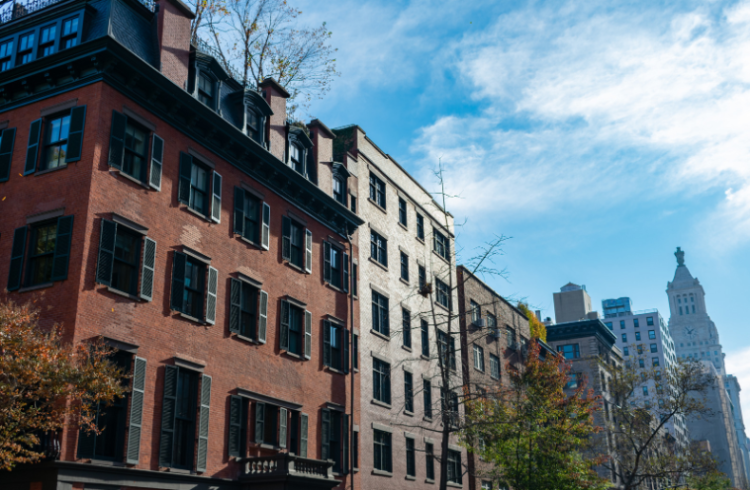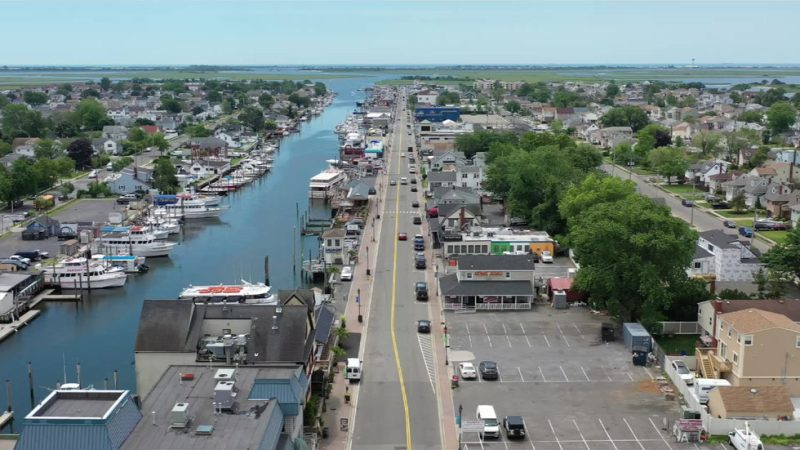Discovering the Charm of Gramercy Park in New York City

Nestled in the heart of Manhattan, Gramercy Park stands as a timeless oasis in the midst of the bustling cityscape. This exclusive residential enclave, known for its historic charm and leafy tranquility, has become a coveted destination for both residents and visitors seeking a respite from the urban hustle. In this article, we will delve into the rich history, unique features, and the undeniable allure that makes Gramercy Park a hidden gem in New York City.
Historical Roots: Gramercy Park’s roots trace back to the mid-19th century when it was envisioned as a private residential square. Samuel B. Ruggles, a visionary developer, acquired the land in 1831 and transformed it into one of the city’s first planned communities. The centerpiece of Gramercy Park is its meticulously landscaped two-acre green space, accessible only to residents whose homes surround the park.
Exclusive Access: One of the most distinctive aspects of Gramercy Park is its exclusivity. The park itself is privately owned by the Gramercy Park Trust, and only those with a key to the park have the privilege of entering its gates. Residents of the surrounding buildings, along with select hotel guests, are among the fortunate few who possess these coveted keys. This exclusivity adds an air of mystery and allure to Gramercy Park, making it a unique and sought-after destination.
Architectural Marvels: Gramercy Park is adorned with a collection of architectural gems that reflect the neighborhood’s rich history. The streets surrounding the park are lined with stately townhouses, many of which date back to the 19th century. The architecture is a mix of Greek Revival, Italianate, and Victorian styles, creating a visually captivating atmosphere that transports visitors back in time. Notable structures like the Players Club, a social club founded by actor Edwin Booth, and the Gramercy Park Hotel, designed by Robert T. Lyons, contribute to the area’s architectural grandeur.
Cultural Hub: Beyond its physical beauty, Gramercy Park has also been a hub for culture and intellectual pursuits. The Players Club, located on Gramercy Park South, has served as a gathering place for artists, writers, and performers for over a century. The club’s rich history includes notable members such as Mark Twain and Eugene O’Neill. Today, it continues to host events and foster creativity in the heart of Gramercy Park.
Green Oasis in the Concrete Jungle: The park itself is a lush haven amidst the city’s concrete jungle. Well-maintained pathways wind through manicured lawns, surrounded by a variety of trees and flowers. The seasonal changes bring a kaleidoscope of colors, from the vibrant blooms of spring to the rich hues of autumn. Residents and keyholders can be seen strolling, reading, or simply enjoying a moment of serenity in this green oasis.
Local Attractions: While Gramercy Park is a destination in itself, its central location also makes it a gateway to many other attractions in New York City. Union Square, with its vibrant greenmarket and eclectic shops, is just a short walk away. The iconic Flatiron Building and Madison Square Park are also within reach, providing a plethora of experiences for those exploring the area.
Dining and Culinary Delights: Gramercy Park is not only a feast for the eyes but also a culinary delight. The neighborhood boasts a diverse array of restaurants, ranging from cozy cafes to upscale dining establishments. Visitors can savor delectable cuisines from around the world, making Gramercy Park a gastronomic destination for food enthusiasts. The Gramercy Tavern, a renowned restaurant located near the park, is celebrated for its farm-to-table approach and exceptional seasonal menus.
Conclusion: In a city that never sleeps, Gramercy Park stands as a testament to the enduring charm of New York City’s history and architecture. Its exclusivity, cultural significance, and greenery make it a unique destination within Manhattan. Whether strolling through the park, admiring the historic architecture, or indulging in the culinary delights of the neighborhood, Gramercy Park offers a multifaceted experience that captures the essence of a bygone era while remaining a vibrant part of contemporary New York City.
-
What is Gramercy Park, and where is it located in New York City?
- Gramercy Park is a private residential square located in the Gramercy neighborhood of Manhattan, New York City. It is situated between East 20th and 21st Streets and bordered by Gramercy Park East and Gramercy Park West.
-
Can anyone visit Gramercy Park?
- No, Gramercy Park is a private park, and access is restricted to those who hold a key. Only residents of the surrounding buildings and select hotel guests have the privilege of entering the park.
-
How can I get access to Gramercy Park?
- Access to Gramercy Park is limited to keyholders, primarily residents of buildings around the park. Some hotels in the area may also provide guests with temporary access keys during their stay.
-
What is the history behind Gramercy Park?
- Gramercy Park was designed in the mid-19th century by developer Samuel B. Ruggles as one of the first planned residential communities in the city. The park remains a historic landmark, surrounded by well-preserved 19th-century townhouses.
-
Are there any notable landmarks or attractions within Gramercy Park?
- Yes, Gramercy Park is home to several notable landmarks, including the Players Club, a social club founded by actor Edwin Booth, and the Gramercy Park Hotel, known for its unique design. The park itself is a beautiful green space with statues and well-maintained gardens.
-
Is Gramercy Park open to the public during specific times?
- No, Gramercy Park is private and generally closed to the public. Only keyholders have access to the park, and its gates are typically locked.
-
What types of architectural styles can be found in the Gramercy neighborhood?
- The Gramercy neighborhood features a mix of architectural styles, including Greek Revival, Italianate, and Victorian. The streets surrounding the park are lined with historic townhouses that contribute to the area’s charm.
-
Are there cultural institutions or events in Gramercy Park?
- Yes, the Players Club, located in Gramercy Park, has a rich history as a gathering place for artists and performers. It continues to host events and promote cultural activities.
-
What are some dining options in and around Gramercy Park?
- Gramercy Park offers a diverse culinary scene, with a range of restaurants and cafes. The Gramercy Tavern, known for its farm-to-table approach, is a popular dining destination in the neighborhood.
-
Is Gramercy Park close to other attractions in New York City?
- Yes, Gramercy Park is centrally located, making it convenient to visit other attractions nearby, including Union Square, the Flatiron Building, and Madison Square Park.
These FAQs provide a glimpse into the unique features, history, and visitor information related to Gramercy Park in New York City.






